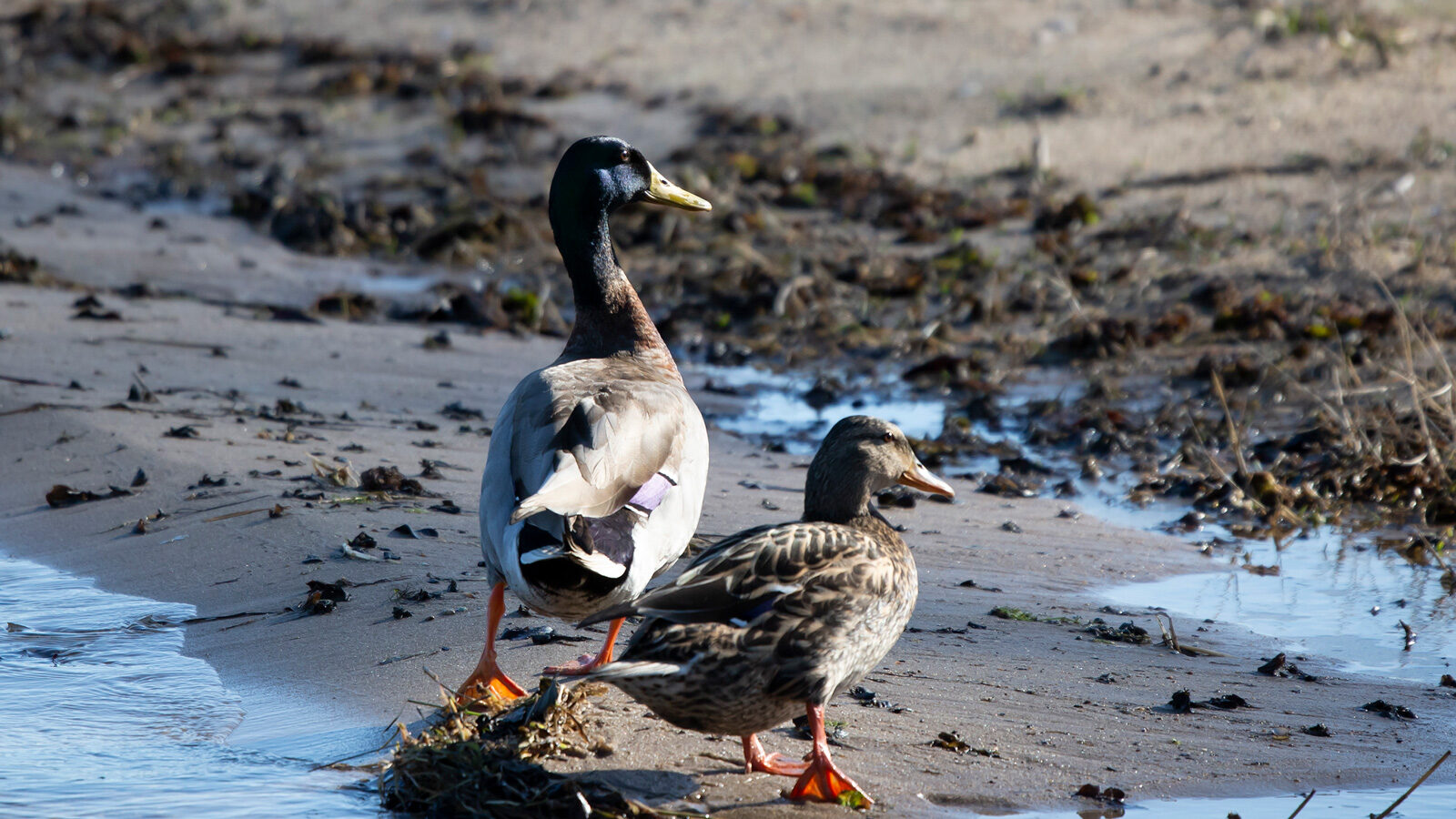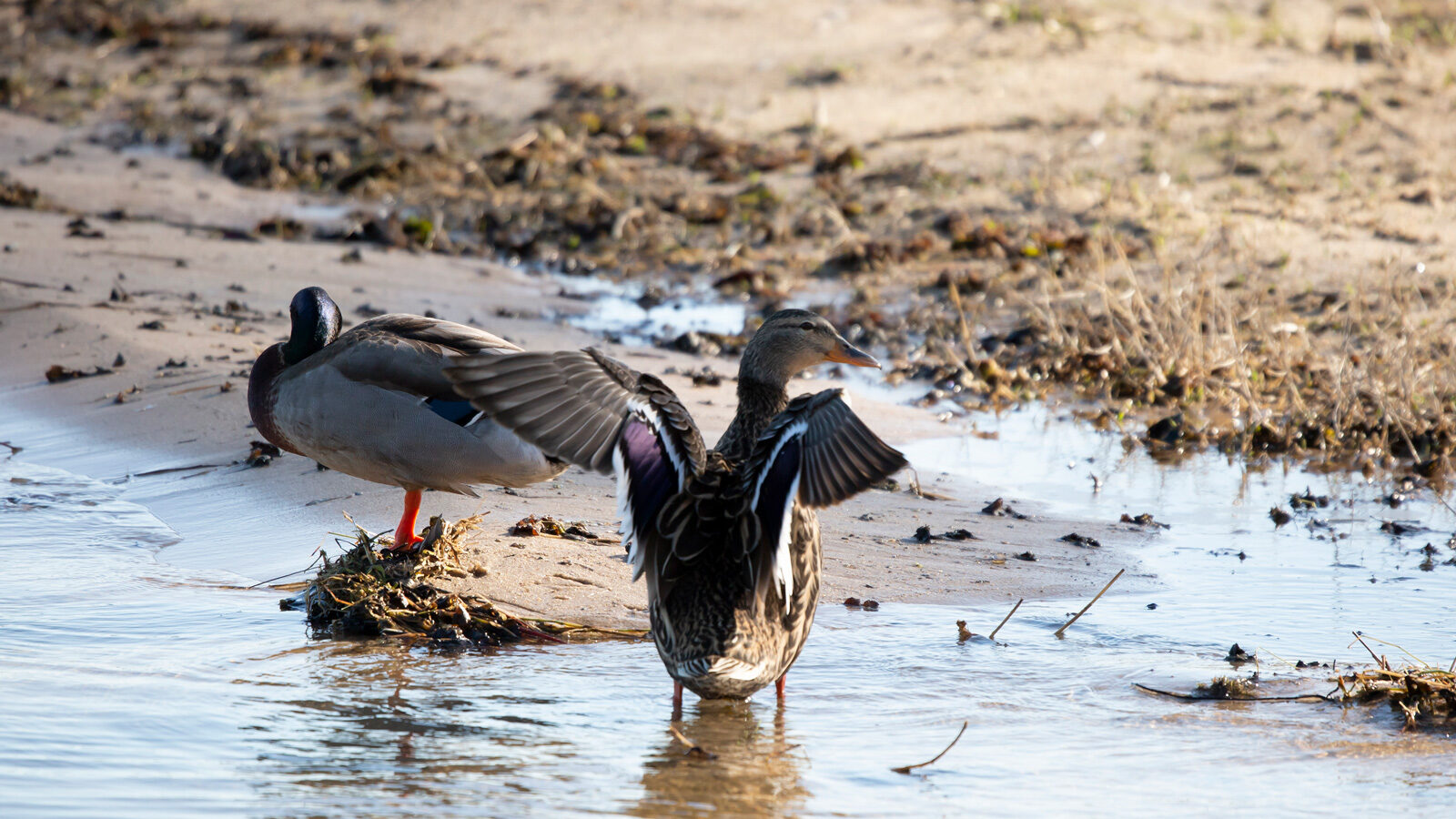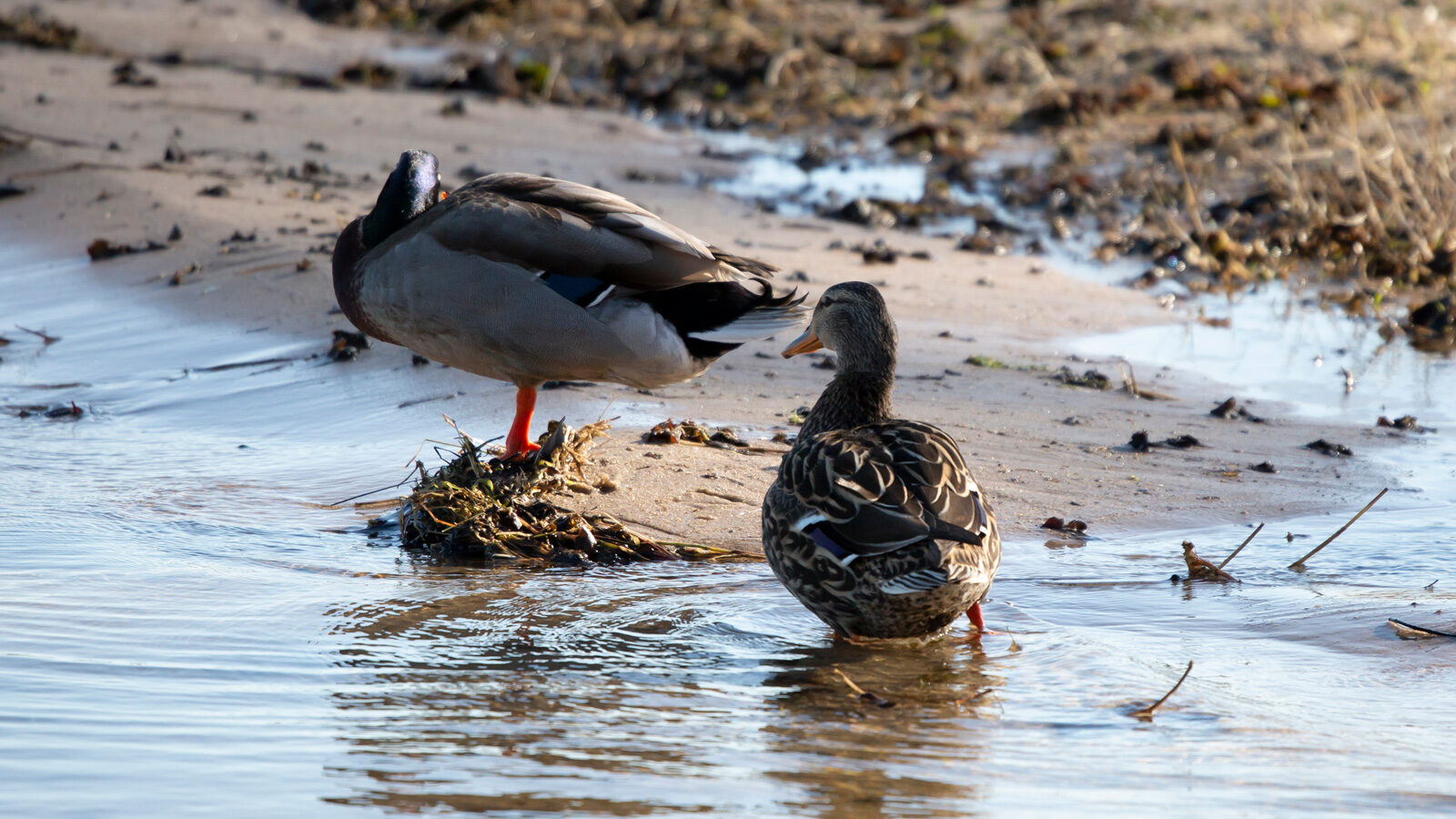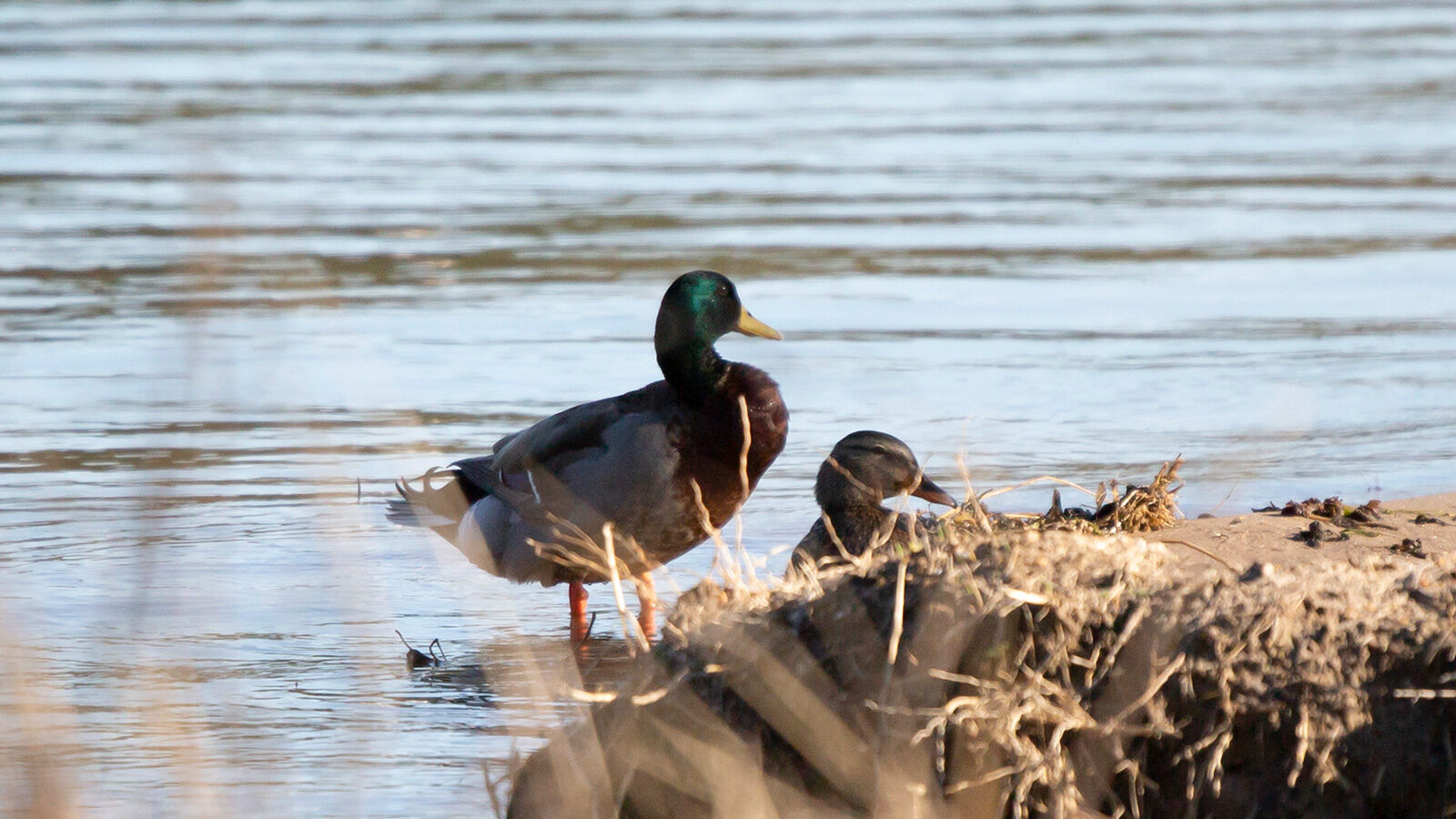
Did you know that all domestic ducks, except for the muscovy are descended from mallards?
Mallards
at
a Glance

Key Features:
Male mallards are gray with brown chests and black rears. Females are brown with white-bordered blue patches on their wings.
Least Concern - Population Decreasing
Habitat:
Wetlands, lakes, ponds, rivers, streams, and reservoirs
nesting habits:
Mallards build nests in depressions in the ground out of grass, leaves, weeds, and rushes lined with their own down.
seasons mallards are active in our area:
All year
Diet:
Aquatic vegetation, grain crops, insects, and worms
hunting Behavior:
Mallards forage by dabbling and grazing.
Commonly Confused With:
American Black Ducks, Mottled Ducks, and Northern Shovelers

Female mallards are often confused with American black ducks because both have similar patterns.

Female mallards are often confused with male mottled ducks because both are brown.